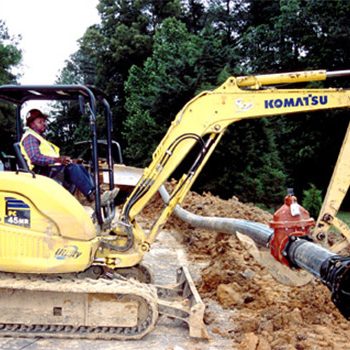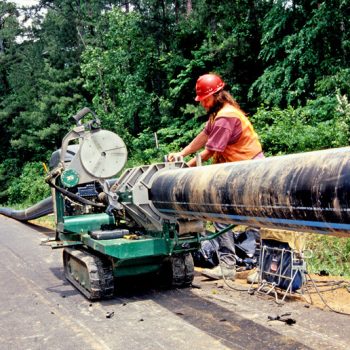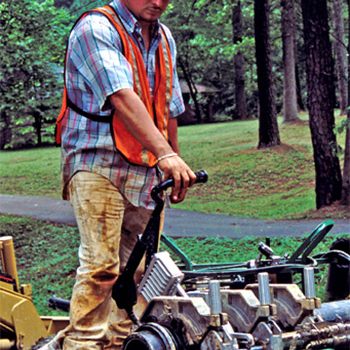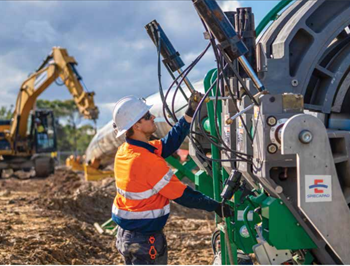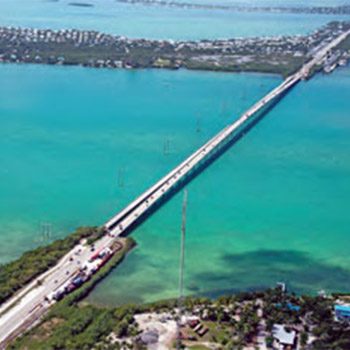Dalton , GA—When the construction company W.L. Hailey bid the Dalton , GA water infrastructure job at $19.8 million, ($5 million under the next closest bidder) everyone thought they were crazy. When they said they could do it in one year instead of four, everyone knew they were nuts. Now that they have completed the job two months early, everyone is asking, “What’s their secret?”
The ‘secret’ is having the kind of work ethic that your grandfather spoke of, a ‘partnering’ arrangement with Dalton Utilities, and the confidence to know you can lay almost a million feet of pipe in less than a year.
“A lot of people have asked us how it feels to leave $5 million on the table,” said Brent Dillahunty of W.L. Hailey. “I just tell them that you can be the second bidder on every job that comes up, and it just means that you’re out of work.”
The project is the second phase in a countywide rehabilitation and expansion that will total over 4 million feet of High Density Polyethylene (HDPE) pipe for water.
Over the years, Dalton Utilities has had a number of problems with their piping system including corrosion, joint leakage, and infiltration. This aging infrastructure as well as the need to remove outlying areas from wells that are providing poor water, is the motivating factor for the expansion and rehabilitation.
We knew with the extra equipment, we could essentially triple the production from what we had originally estimated
The completion date of W.L. Hailey’s bid was what really sweetened the pot. The expansion portion of the project will add 6000 new customers to the city’s water system. A three year earlier completion date means three additional years of collecting new revenue for Dalton Utilities.
Dalton is the carpet capitol of the world. Almost 90% of the functional carpet produced worldwide is made within a 25-mile radius of the city. Carpet mills use high volumes of water and Dalton ranks second only to Atlanta in flow capacity for the state of Georgia .
Dalton Utilities first used HDPE in their gas distribution system and loved its intrinsic trenchless capabilities. Their wastewater collection system also needed upgrading from clay and iron pipelines that were deteriorating badly. Infiltration of groundwater into the wastewater pipes created too much flow for the treatment plant to handle. HDPE was used along with pipe bursting methods to create a monolithic structure and also upsize the system. They then used about 65 miles of it on a land application system to distribute treated wastewater through an extensive irrigation-piping network. The success of HDPE was solidified when the project was completed a year ahead of schedule and it became the obvious choice for Dalton ‘s water distribution system.
Several Dalton city officials traveled to Indianapolis IN where Indianapolis Water Company (IWC) which is reported to be the single largest user of HDPE for water transmission and distribution systems in the U.S. IWC began using HDPE in the fall of 1992. The first HDPE installation projects exclusively employed horizontal directional drilling in an effort to reduce restoration costs in existing established residential areas.
Since then IWC has increased its use of HDPE and expanded on its methods of installation to include conventional open trench installations along with horizontal directional drilling in a variety of applications. Indianapolis engineers shared their thoughts on HDPE and their installation guidelines and were helpful in answering many questions for Dalton Utilities.
“The engineers for Indianapolis were pretty much the pioneers for using polyethylene on a large scale in the water industry,” said Steve Bratton of Dalton Utilities. “They were extremely happy with polyethylene so we installed 750,000 feet of HDPE for the first phase of the project and went from a leaking, corroded system to a completely fused homogeneous system that won’t corrode.”
For the second phase of the project, W.L. Hailey was not only the low bidder and selling themselves as being able to do something that other contractors’ thought was impossible; they were delving into unfamiliar territory as far as the type of pipe being used.
“With limited experience using polyethylene, the first step we made was to visit with pipe manufactures and McElroy fusion experts to learn all we could about the pipe and fusion procedures,” said Monte Beasley of W.L. Hailey. “We determined early on that additional fusion equipment made up for the expense by saving time.”
Hailey purchased a total of 19 McElroy fusion machines for the project. Beasley explained that one crew could operate three fusion machines in the same amount of time it takes to run one. “We knew with the extra equipment, we could essentially triple the production from what we had originally estimated,” said Beasley.
The process of running additional fusion equipment at the same time is called ‘piggy backing.’ While the fusion joint is cooling on the first fusion procedure, there is time to start a second and third fusion joint in additional machines. While the second and third joints are cooling, the first is ready to be moved and the process rotates accordingly.
Perhaps the most beneficial aspect of the project is the ‘partnering’ agreement between W.L. Hailey and Dalton Utilities. Bratton and Beasley agree that ‘partnering,’ has played a significant role in the success of the project. Under this type of arrangement, the municipality and the contractor work towards agreed upon goals that will benefit all concerned. With this as the primary focus, it is easy to avoid the head butting that is often present between the contractor and owner of a project. Partnering thrives in an atmosphere of trust and openness and flounders when co-operation is absent.
In the water industry, HDPE has mostly been used for directional boars under rivers and roads. Dalton has now joined cities like Indianapolis , St. Petersburg , Louisville and many smaller cities and rural water districts in using HDPE as a large-scale solution to their water problems.
“It is rare that the longest lasting and most efficient solution is also the least expensive,” said Bratton. “As long as the operator stays within the fusion specifications, polyethylene is an ideal, long-term solution for water infrastructure.”
The project is now in phase three of the total operation that is on schedule to be completed in 2006.
